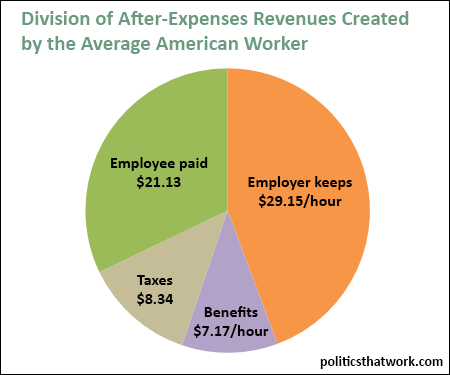
Description: This pie chart shows how the productivity, after expenses, of the American worker is split up. Productivity represents the value added by the worker per hour. It represents how much more value the outputs of the worker's activity has than the inputs. It can be calculated by dividing the nation's GDP (excluding certain external inputs) by the number of hours worked in the nation. Note that the taxes identified are the individual's taxes and do not include the employer's taxes. The taxes include state, local and federal taxes and FICA. The "employee paid" slice of the pie is the post-tax take home pay of the employee.
Sources: Conference Board EPI Tax Policy Center Tax Foundation Quartz
Last updated: March 16, 2016





